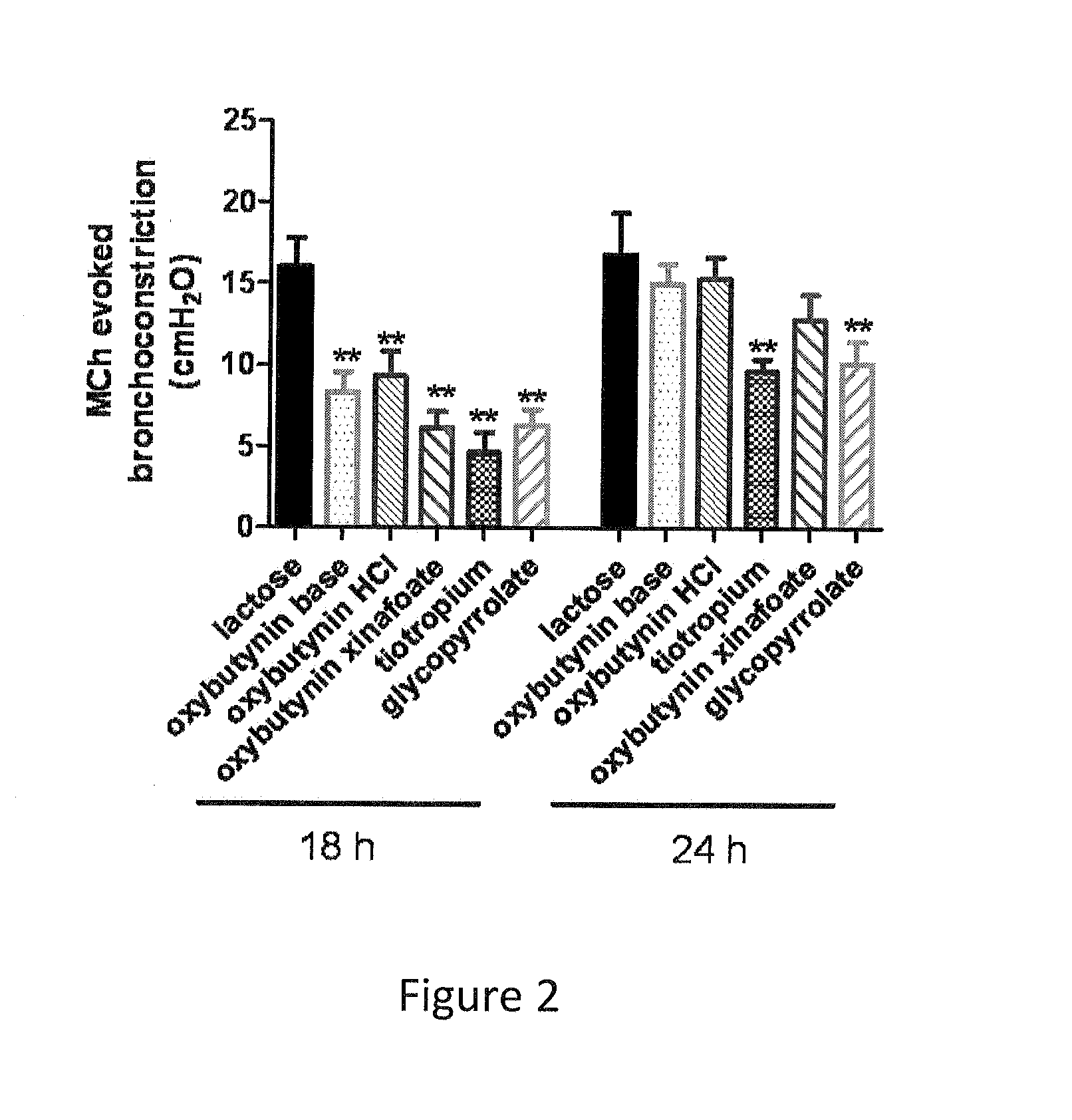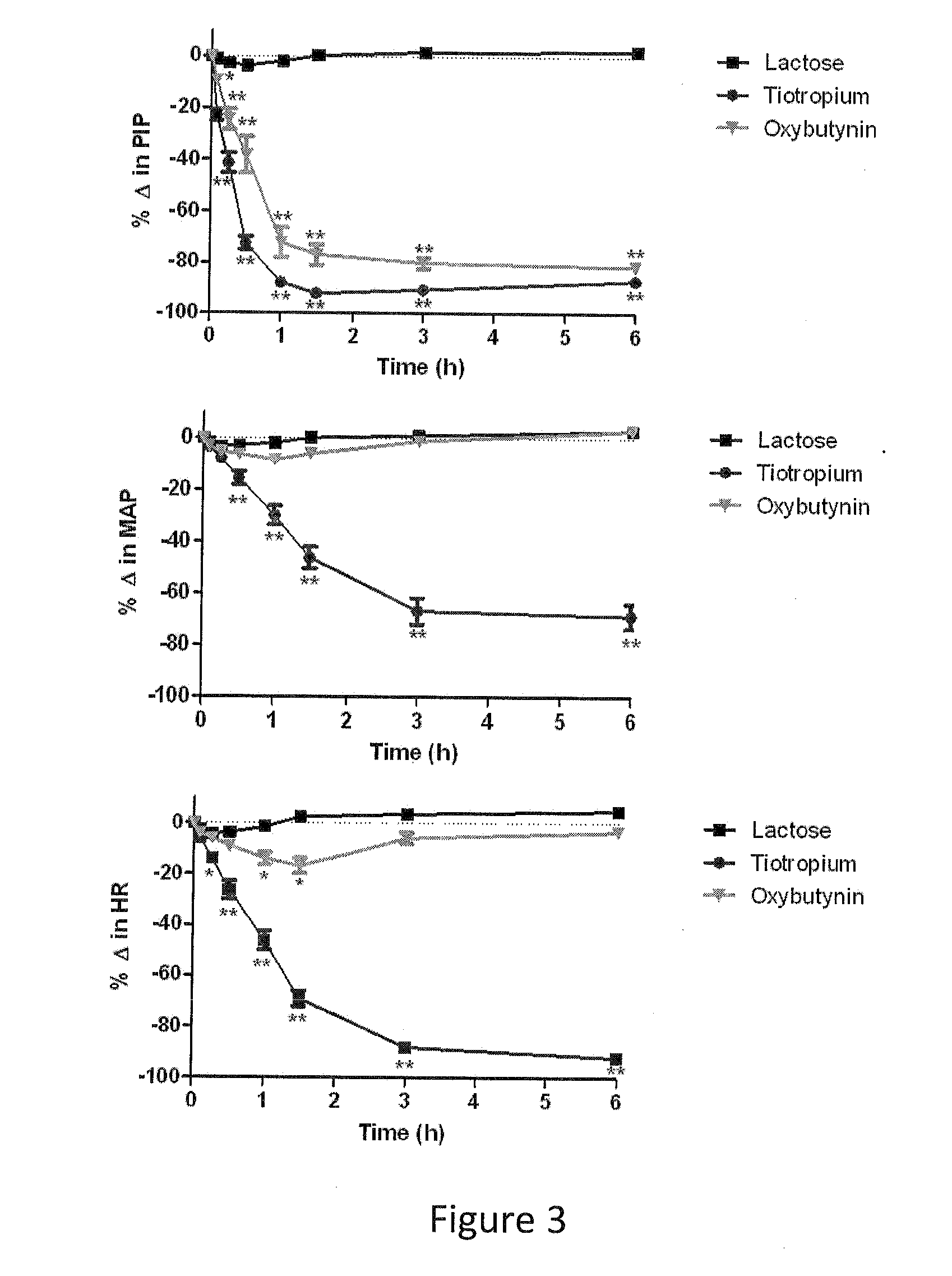Methods and compositions for administration of oxybutynin
a technology of oxybutynin and oxybutynin, which is applied in the direction of biocide, animal repellents, dispersions, etc., can solve the problems of desirably high blood levels, significant amount not reaching targeted tissues, and unsatisfactory side effects, so as to prolong the effect of effect, and reduce adverse metabolite production
- Summary
- Abstract
- Description
- Claims
- Application Information
AI Technical Summary
Benefits of technology
Problems solved by technology
Method used
Image
Examples
example 1
Micronization of Oxybutynin
[0082]Oxybutynin in crystalline form is micronized to a median aerodynamic particle size of less than 10 microns. The powder is packaged in a dry powder inhaler (DPI) made in accordance with U.S. Pat. No. 6,026,809.
example 2
Micronization of Oxybutynin Chloride
[0083]Example 1 was repeated, using micronized oxybutynin chloride of median aerodynamic particle size of less than 5 microns in place of oxybutynin.
example 3
Preparation of Oxybutynin Xinafoate
[0084]Example 1 was repeated, using micronized oxybutynin xinafoate salt of maximum aerodynamic particle size of about 10 microns in place of oxybutynin. The oxybutynin xinafoate salt was prepared by as follows: A 250 mL, round-bottom flask was equipped with a magnetic stirrer, a thermocouple, and a nitrogen-inlet adapter. Under nitrogen, the flask was charged with oxybutynin (20.04 g, 0.056 mol.), xinafoic acid (10.69 g. 0.057 mol. 1.02 equiv, and methyl tent-butyl ether (100 mL, 5 vol). The solids dissolved almost immediately at approximately 18° C. The batch was warmed to 50° C., and at approximately 21° C., crystallization started. The mixture was maintained at 50° C. for one hour, was cooled to 33° C. in air, and then in an ice bath to 3° C. The mixture was maintained at <5° C. for one hour and was filtered, and the filter cake was washed with methyl tert-butyl ether (100 mL). The wet cake was dried in a vacuum oven at 45° C. for one hour.
[008...
PUM
| Property | Measurement | Unit |
|---|---|---|
| aerodynamic particle size | aaaaa | aaaaa |
| half life | aaaaa | aaaaa |
| solubility | aaaaa | aaaaa |
Abstract
Description
Claims
Application Information
 Login to View More
Login to View More - R&D
- Intellectual Property
- Life Sciences
- Materials
- Tech Scout
- Unparalleled Data Quality
- Higher Quality Content
- 60% Fewer Hallucinations
Browse by: Latest US Patents, China's latest patents, Technical Efficacy Thesaurus, Application Domain, Technology Topic, Popular Technical Reports.
© 2025 PatSnap. All rights reserved.Legal|Privacy policy|Modern Slavery Act Transparency Statement|Sitemap|About US| Contact US: help@patsnap.com



